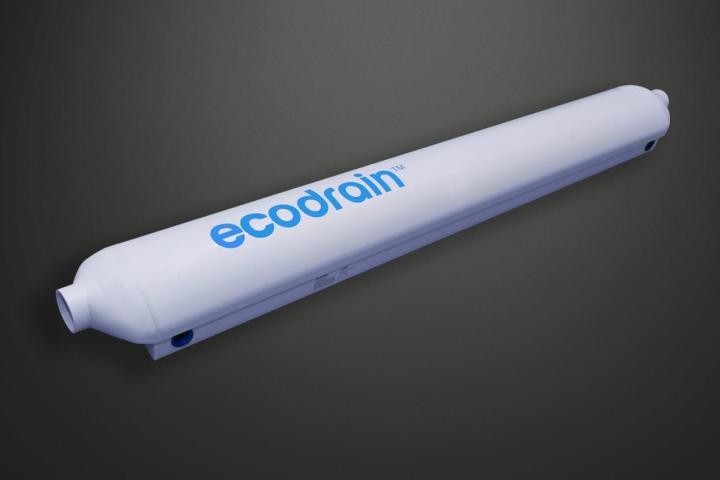
It’s called EcoDrain, and while it’s definitely not a new concept, it’s a fresh new take on an old idea, and finally makes waste heat recovery a viable possibility for regular homeowners.
Waste heat recovery systems and drain heat exchangers have been around for years, but unfortunately haven’t been widely adopted in residential spaces because they’re typically somewhat expensive and difficult to install. To this day, most heat recovery systems are designed to be installed vertically, which limits the places they can be installed to newly-constructed homes, or bathrooms with at least five feet of vertical drain runs. In other words, they’re either difficult or downright impossible to retrofit into your home.
EcoDrain, on the other hand, is designed to be installed horizontally, which allows it to be mounted much closer to the source of hot water, i.e. your shower drain. Because of this, it’s able to catch waste water much sooner than traditional systems –when the water is at its hottest– and thereby recycle more energy. EcoDrain is also relatively easy to install according to it’s creators. It requires no electricity and has no moving parts, so as long as you’re a savvy DIYer who’s comfortable doing your own plumbing work, putting one under your shower should be fairly painless.
Check out the video below for a simple explanation of how it works.
As you can see, despite EcoDrain’s radically different design, it works just like a traditional waste heat exchanger. With traditional systems, as warm water flows down the waste drain, incoming cold water flows through a spiral copper tube wrapped tightly around the copper section of the waste drain. This preheats the incoming cold water that goes to the water heater or a fixture. Ecodrain works in almost exactly the same way, but does away with the spiral tube in favor of a full-on wastewater reservoir, which helps maximize heat transfer to the fresh water pipe. Furthermore, in addition to this large waste heat changer, EcoDrain’s creators also incorporated their own turbulator design into the unit, which agitates the water and increases the rate of heat transfer even further, but without reducing water pressure.
The company claims that by installing just one EcoDrain heat exchanger in your home, you can recover as much as 45% of the waste heat from your shower drain. They’re currently selling units at a base price of $440, which is a bit on the spendy side, but could definitely be a worthwhile investment in the long term if you use a lot of hot water.




